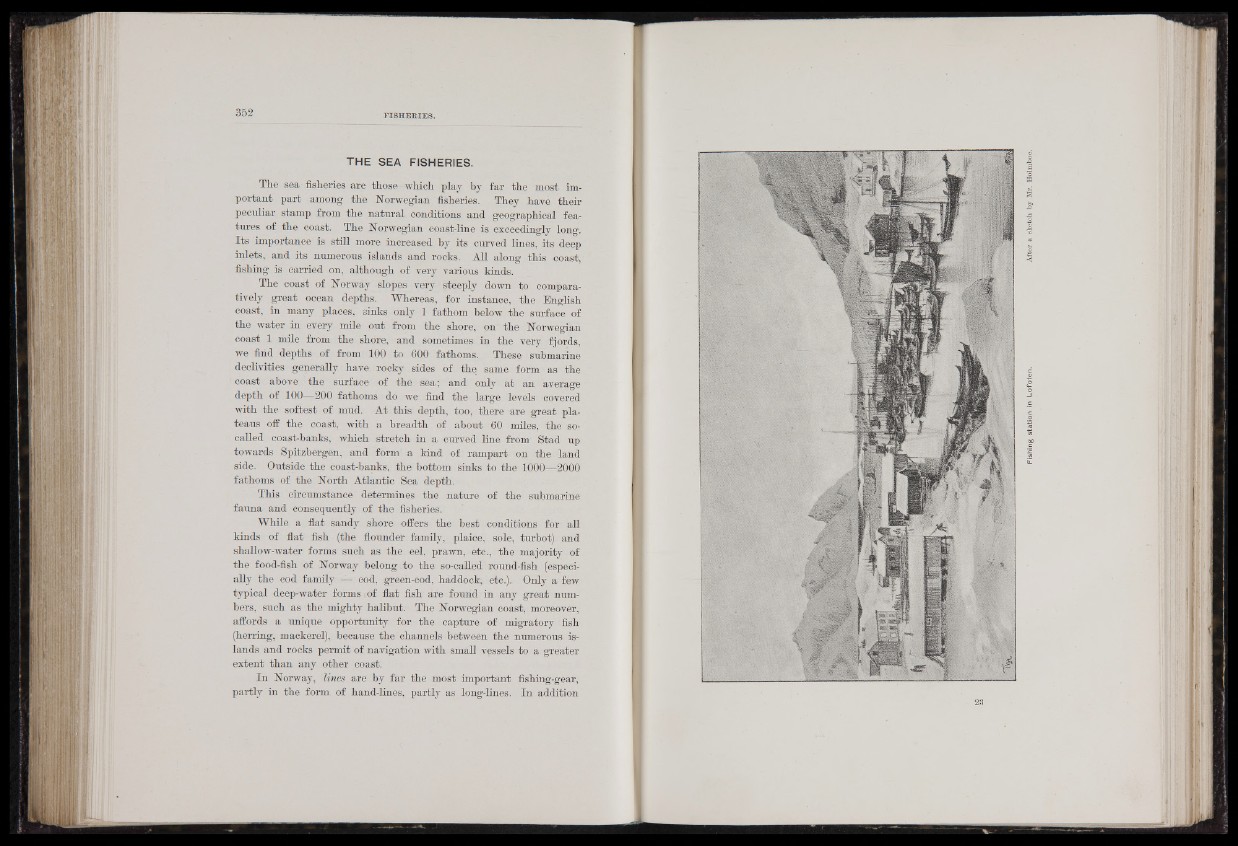
THE SEA FISHERIES.
The sea fisheries are those which play by far the most important
part among the Norwegian fisheries. They have their
peculiar stamp from the natural conditions and geographical features
of the coast. The Norwegian coast-line is exceedingly long.
Its importance is still more increased by its curved lines, its deep
inlets, and its numerous islands and rocks. All along this coast,
fishing is carried on, although of very various kinds.
The coast of Norway slopes very steeply down to comparatively
great ocean depths. Whereas, for instance, the English
coast, in many places, sinks only 1 fathom below the surface of
the water in every mile put from the shore, on the Norwegian
coast 1 mile from the shore, and sometimes in the very fjords,
we find depths of from 100 to 600 fathoms. These submarine
declivities generally have rocky sides of the same form as the
coast above the surface of the sea; and only at an average
depth of 10 0— 200 fathoms do we find the large levels covered
with the softest of mud. At this depth, too, there are great plateaus
off the coast, with a breadth of about 60 miles, the so-
called coast-banks, which stretch in a curved line from Stad up
towards Spitzbergen, and form a kind of rampart on the land
side. Outside the coast-banks, the bottom sinks to the 1000—2000
fathoms of the North Atlantic Sea depth.
This circumstance determines the nature of the submarine
fauna and consequently of the fisheries.
While a flat sandy shore offers the best conditions for all
kinds of flat fish (the flounder family, plaice, sole, turbot) and
shailow-water forms such as the eel, prawn, etc., the majority of
the food-fish of Norway belong to the so-called round-fish (especially
the cod family — cod, green-cod, haddock; etc.). Only a few
typical deep-water forms of flat fish are found in any great numbers,
such as the mighty halibut. The Norwegian coast, moreover,
affords a unique opportunity for the capture of migratory fish
(herring, mackerel), because the channels between the numerous islands
and rocks permit of navigation with small vessels to a greater
extent than any other coast.
In Norway, lines are by far the most important fishing-gear,
partly in the form of hand-lines, partly as long-lines. In addition